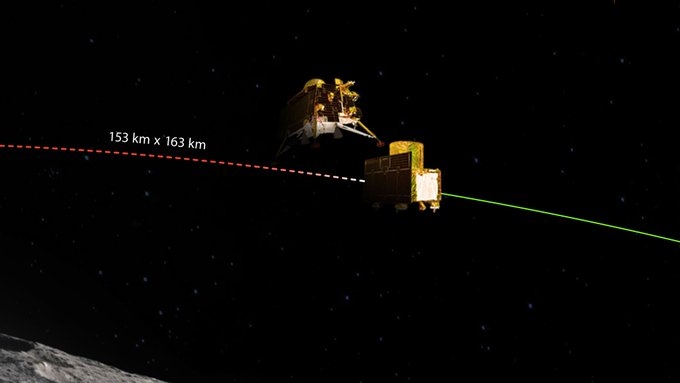Chandrayaan-3’s High-Stakes Lunar Landing: A Nerve-Wracking 20 Minutes Await
Ten News Network

New Delhi, August 22, 2023: The nation is bracing for a nail-biting and historic moment on Wednesday as India’s Chandrayaan-3 embarks on its audacious mission to achieve a soft landing on the moon’s surface.
With the Vikram Lander carrying the Pragyaan rover poised to touch down near the moon’s south pole, the final twenty minutes of this endeavor are being aptly described as the ‘twenty minutes of terror,’ akin to the thrilling climax of a T-20 cricket match.
Chandrayaan-3’s intricate journey and landing process have been meticulously orchestrated. Following a majestic lift-off by ISRO’s Bahubali rocket, Chandrayaan-3 completed elliptic orbits around the Earth, gaining momentum. Progressing to the moon’s orbit, the satellite successfully stabilized.
In a pivotal maneuver, the propulsion module and Vikram lander, along with the Pragyaan rover, separated in a delicate operation on August 17. Vikram lander subsequently transitioned to a lower elliptical orbit before commencing its powered descent, a feat reminiscent of the Chandrayaan-2 mission.
The most critical phase unfolds during the landing day, as Vikram lander initiates its descent from 25 km above the lunar surface. Rapidly accelerating at 1.68 km per second (6048 km per hour), the lander enters a ‘rough braking phase’ to adjust its trajectory.
Upon entering the ‘fine braking phase,’ the lander maneuvers to achieve a vertical alignment with the moon’s surface. At an altitude of 800 meters, both horizontal and vertical velocities cease, marking a moment of suspense. The lander hovers above the surface, collecting data for hazard detection.
Inching closer, the Vikram lander halts at 150 meters, capturing detailed images to identify the optimal landing site. With precise calculations, the lander cautiously touches down with its specially designed legs primed to absorb the impact.
As lunar dust settles, the Pragyaan Rover is gently deployed, initiating the exploration phase. The monumental moment arrives when the lander and rover exchange ‘selfies,’ transmitting images from the lunar surface back to Earth.
With both the Vikram lander and rover equipped with solar power, the real scientific mission begins, scheduled to last for a lunar day, equivalent to 14 Earth days. If successful, India will join an elite club of nations achieving a soft landing on a celestial body, marking a significant stride for ISRO and a monumental leap for the country of 1.4 billion.
As anticipation builds and the countdown continues, all eyes are fixed on the skies as India’s ambitions take flight into the celestial realm.

